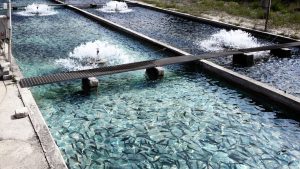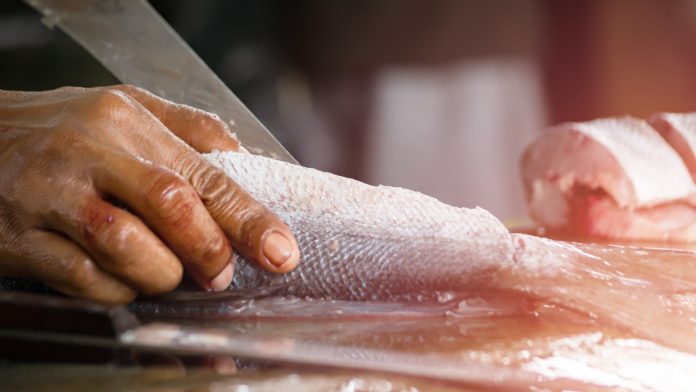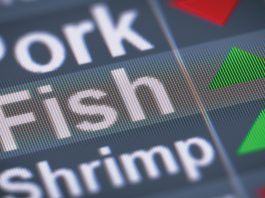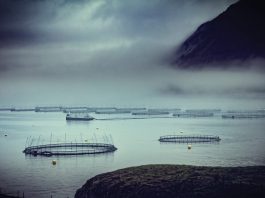The Federation of European Aquaculture Producers (FEAP) speaks to The Innovation Platform about safeguarding the aquaculture sector from the COVID-19 pandemic.
FEAP discusses its aims for the future alongside what needs to be done to protect the aquaculture sector from the effects of the COVID-19 pandemic.
Our vision is to close the gap between the consumption and production of seafood with healthy and sustainable products for EU citizens. Our mission is to ensure that EU aquaculture reaches at the least the global growth rate in a way that is environmentally sound, socially acceptable, and economically viable.
For increased growth:
- European environmental legislation must be streamlined to ensure a transparent interpretation that supports aquaculture production growth by sea and by land;
- A competitive level playing field with imported seafood must be established no later than 2020;
- Zones for both marine and inland aquaculture should be allocated no later than 2020;
- The European Commission should create a best practice platform by 2020 to foster knowledge transfer and closer collaboration among Member States;
- Compensatory measures integrating the farming of low-trophic species should be facilitated and promoted for marine finfish aquaculture to support ‘more food from the oceans;1 and
- Consumer information at sale points should be improved so as to ensure responsible purchasing decisions.
Of course, many of these things are not yet in place. For more efficient and sustainable food systems:
- Research is needed to optimise new and conventional production technologies at land and sea to improve the prevention and treatment of fish diseases and to improve fish welfare;
- Promoting the increased use of lifecycle analyses to support fact-based information to consumers and to point to ways of increased sustainability and reduced carbon footprint;
- Through the easier sourcing of ingredients for compound feed and research into alternative raw materials; and
- The EMFF must be introduced in a timely manner.
Regarding climate change:
- Climate change adaptation plans must assist the sector in forecasting potential hazards and ways to mitigate impacts at the farm level; and
- Science-based policy must allow for the selection of more robust sites for aquaculture.
Regarding a socially acceptable aquaculture:
- Societal acceptance could be achieved through an EU-wide communication campaign of farmed products highlighting their low carbon footprint, their efficient use of natural resources, and high nutritional value. This should also go hand-in-hand with the promotion of aquaculture educational programmes; and
- Training and capacity-building programmes will be the key to attracting future generations to the sector.
By 2030, our vision will have developed a diversified and innovative European aquaculture industry with an annual output of 4.5 million tonnes of sustainable food products worth €14bn and supporting more than 150,000 jobs in coastal and rural Europe.
The FAO’s 2020 SOFIA report
Every second year, the Food and Agriculture Organization of the United Nations (FAO) continues to highlight the significant and growing worldwide role of fisheries and aquaculture in providing food, nutrition, and employment. The 2020 edition of its unmatched report The State of World Fisheries and Aquaculture (SOFIA) is accurately entitled Sustainability in Action. It pursues, among other objectives, the Sustainability Development Goal (SDG) number 14 of the United Nations 2030 Agenda: conserve and sustainably use the oceans, seas, and marine resources for sustainable development.
This exceptionally valuable report provides technical insight and factual information on a sector that is crucial for societal success around the world. In it, aquatic products are recognised not only as some of the healthiest foods on the planet but also as some of the less impactful on the natural environment.
Sector stagnation
SOFIA 2020 reveals that total aquaculture harvest worldwide in 2018 reached an all-time record of 114.5 million tonnes. Finfish production dominated (54.3 million tonnes), followed by algae (32.4 million tonnes), molluscs (17.7 million tonnes), and crustaceans (9.4 million tonnes). But these impressive quantities should not mask the fact that the global annual growth rate of aquaculture has greatly declined in recent years. After decades of 6-10% interannual growth rates, 2018 saw an increase of only 2% over 2017. Two decades ago, Europe already walked that path in advance and, since the turn of the century, aquaculture production in almost all European countries has stagnated.
The FAO has identified a number of factors contributing to this worrying slowdown. These include the adoption of broader environmental regulations, the reduced availability of water and suitable production locations, increasing outbreaks of aquatic animal diseases, and decreasing aquaculture productivity gains. Nevertheless, the FAO recognises countries in which aquaculture production continues to grow, both developing (like Egypt, India, Indonesia, Vietnam, or Bangladesh) and developed (like Norway or Chile). The reasons for these exceptions are region-dependant, but a trend is clear: in the 21st century, aquaculture growth requires political will to promote appropriate policies, strategies, and private and public investment. Certainly, further technical issues have to be addressed on feeds, genetic selection, biosecurity, disease control, digital innovation, and business developments. But from the European Union we can showcase that solving these hurdles is clearly not enough. Even the adoption of aquaculture spatial planning or ecologically sound technological innovation are necessary but never sufficient.
European aquaculture producers can warn the rest of the world that the biggest challenge for the continued advancement of this sector is the adoption of appropriate general governance decisions aiming specifically to promote the development of aquaculture amid all other economic activities.
An added problem is that public authorities and decision makers that are responsible for the creation and implementation of such general governance regulations will not read SOFIA 2020. Quite probably, they will have never heard of it.
Supporting aquaculture during the coronavirus emergency
The European fish farming sector is facing a severe and unexpected challenge due to the coronavirus pandemic that is putting at risk its capacity to continue providing fish to the markets. The situation is extremely serious due to the adoption of sanitary and protectionist measures by all governments of Europe while trying to minimise the spread of COVID-19. FEAP posits a bold outlook with European wide solutions to favourably overcome this situation.
Our objective is to assure the provision of fish to the markets through the normal functioning of the European fish farming industry, avoiding at the same time the risk of collapse of the sector. The strategy to achieve this includes a consideration of the specific characteristics of fish farming and the belief that the single way to reach the objective is through the adoption of urgent, powerful, and extraordinary measures at EU level to prevent the coronavirus emergency from having irreversible negative impacts on the normal operation of individual fish farms.

© iStock-seraficus
Step 1 – providing liquidity to fish farms
The target here is to prevent liquidity problems from affecting the payment of normal operating costs (salaries, feed, oxygen, transportation, etc.) through:
- The immediate activation of de Minimis state aid and raising its ceiling to €120,000;
- Unlocking EMFF money. Including:
- Simplification of the administrative procedures;
- Application of pre-financing procedures as opposed to the current reimbursement system;
- Making operational costs (like fish feed), and damages caused by the Emergency, eligible;
- Allowing direct financial support for fish farms;
- Providing guarantees that will facilitate access to short-term capital from the banking system; and
- Other measures:
- Providing additional sources of financing beyond the EMFF, including the freezing of the payment of instalments to tax offices, social security institutions, and banks loans, for several months; and
- Further empowering producer organisations through their production and marketing plans, including raising their limit of expenditure to 12%, the pre-financing limit to 100%, and other capacities in their production and marketing plans such as the implementation of temporary storage mechanisms.
Step 2 – managing the farmed fish stocks
Stock management is the biggest challenge faced in this crisis by fish farming companies. Fish growth can be slowed down but not halted. Uncontrolled biomass increase has an initial impact on the capacity to keep the stock alive and healthy but also builds up a posterior price collapse risk for once the markets are fully open again. Sales of fish through the Horeca channel have completely disappeared and retail for fresh fish has slowed down. The target here is thus to avoid problems on managing the biomass stock and posterior market collapse.
The biomass in each fish farm must be culled to prevent surpassing the holding capacity of the farms. Innovative and viable ways to manage the biomass are to be implemented but all require harvesting of fish. The solutions are:
- Storing the fish out of the water: filleted (or not) and frozen. Temporary storage mechanisms have existed in the past in the fisheries sector and are today used for agricultural products. They are currently the most reasonable mechanisms for farmed fish even though procedural and technical issues require solving;
- Diverting fish sales to public procurement (public canteens, hospitals, military, etc.); and
- Purchasing excess fish production directly by the European Union.
Facing the COVID-19 challenge
On 29 May, the FEAP held an online General Meeting with the participation of national aquaculture associations from 17 European countries, both EU and non-EU. The assembly provided the ground for an exchange of views and discussions on the aquaculture sector’s situation in the different countries in the context of the COVID-19 crisis
FEAP’s president, Marco Gilmozzi, expressed his concern that “European aquaculture is facing its biggest challenge for decades and, if the situation is not dealt with correctly, market risks will continue threatening in the aftermath of the sanitary crisis.”
Primary producers are the weak link in the value chain of aquatic products in Europe. Increasing operational production costs imposed by COVID-19 and the total closure of the important food service sector across Europe and export markets have brought European aquaculture to a critical point. Only retail markets and farm-gate sales are providing relief. The individual situation of the farming companies depends on the species produced, the markets targeted, and the countries.
After an almost complete activity standstill in the beginning of March at the onset of the COVID-19 pandemic, businesses have slowly recovered but continue to see an average of 20-30% less sales than the same time last year. Fish farmers have worked hard to keep their workers safe and livestock healthy, showing great resilience in their operations and shifting their market aims.
Transportation logistics have been a bottleneck for delivery to food markets and for juvenile and live fish movements. This is particularly the case for exports to far-away markets, the unavailability of flights with cargo capacity having affected exports almost as much as the situation in the destination markets.
The representatives of FEAP’s national associations highlighted that in the previous three months there had been a shift from initially solving the early operational challenges and stock-in-the-water increases to a search for alternative market developments as the dynamics of consumer shopping and consumption are changing radically.
The need for public aid
In this situation there is an urgent need for public aid to keep the production and the employment going. The European Maritime Fisheries Fund (EMFF), planned to run between 2014 and 2020 and with a budget of €6.5bn, has been underused from its beginning for several reasons and more than €1bn remains unspent. For this reason, European public administrations set their eyes on it to provide quick and targeted relief for the fisheries sector (including aquaculture) in light of the COVID-19 crisis. The European Commission had proposed in March and April two successive amendments to the EMFF. The second of which was well-targeted and could, in theory, offer effective relief to EU fish farmers. Both amendments were swiftly approved by the European Parliament and the Council of Europe, a development welcomed by the FEAP. In particular, Regulation (EU) 2020/560 could grant working capital and compensation to aquaculture farmers for the temporary suspension or reduction of production and sales or for additional storage costs occurring between 1 February and 31 December 2020 as a consequence of the COVID‐19 outbreak.
Unfortunately, not a single EU Member State has put this regulation into practice. The FEAP is extremely concerned that what was envisaged to provide swift aid to the EU aquaculture sector has entered the same doldrums as the conventional EMFF regulation. Competent authorities responsible to manage the EMFF at national and regional level are again proving that they are unable to handle these funds in an effective way.
This situation creates further concerns as the next EMFF (2021-2017) is already looming on the horizon. This next fund, which will probably be called the European Maritime Fisheries and Aquaculture Fund (EMFAF), has been designed as a very flexible fund but the minimal creativity and boldness being demonstrated by the competent authorities throughout the EU is proving once more that they only work effectively with very prescriptive regulations.
The FEAP’s president insisted that the European Commission and national authorities should start taking care of the potential deep market crisis that will occur once the COVID-19 pandemic is over and the aquatic product markets start to be flooded with fish arriving from European, non-European, and distant producing countries, not only from aquaculture production but also from capture fisheries.
Good communication and an enhanced promotion and vigilance of fair trade will be required. The current Common Fisheries Policy considers Producer Organisations (POs) as key for the development of a viable and responsible aquaculture industry. In this sense, the FEAP has been recommending its member associations to convert into POs. Several are already operational in countries like Greece, Poland, the UK, Italy, and Spain. These POs could articulate solutions to this situation through their production and marketing plans. Furthermore, the POs could co-operate together for the sustainability of the European aquaculture sector that provides healthy, nutritious, tasty, and locally-produced food at an affordable price.
The Federation of European
Aquaculture Producers
+32 4 3382995
secretariat@feap.info
Tweet @feapinfo
www.feap.info
Please note, this article will also appear in the fourth edition of our new quarterly publication.









